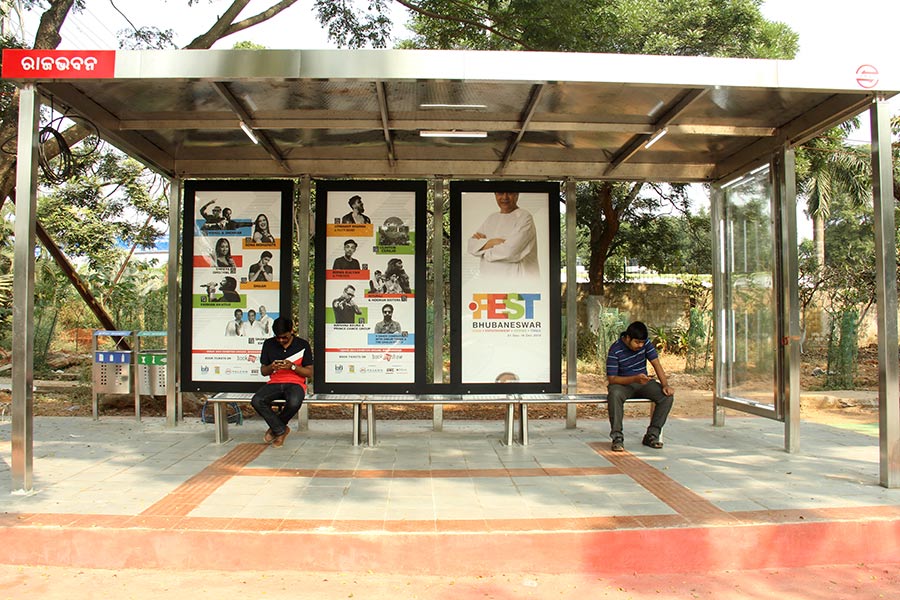|
Synthetic Language
A synthetic language uses inflection or agglutination to express syntactic relationships within a sentence. Inflection is the addition of morphemes to a root word that assigns grammatical property to that word, while agglutination is the combination of two or more morphemes into one word. The information added by morphemes can include indications of a word's grammatical category, such as whether a word is the subject or object in the sentence. Morphology can be either relational or derivational. While a derivational morpheme changes the lexical categories of words, an inflectional morpheme does not. In the first example below, the adjective ''fast'' followed by the suffix ''-er'' yields ''faster'', which is still an adjective. However, the verb ''teach'' followed by the suffix ''-er'' yields ''teacher'', which is a noun. The first case is an example of inflection and the latter derivation. * ''fast'' (adjective, positive) vs. ''faster'' (adjective, comparative) * ''teach'' (ve ... [...More Info...] [...Related Items...] OR: [Wikipedia] [Google] [Baidu] |
Inflection
In linguistic morphology, inflection (or inflexion) is a process of word formation in which a word is modified to express different grammatical categories such as tense, case, voice, aspect, person, number, gender, mood, animacy, and definiteness. The inflection of verbs is called ''conjugation'', and one can refer to the inflection of nouns, adjectives, adverbs, pronouns, determiners, participles, prepositions and postpositions, numerals, articles, etc., as '' declension''. An inflection expresses grammatical categories with affixation (such as prefix, suffix, infix, circumfix, and transfix), apophony (as Indo-European ablaut), or other modifications. For example, the Latin verb ', meaning "I will lead", includes the suffix ', expressing person (first), number (singular), and tense-mood (future indicative or present subjunctive). The use of this suffix is an inflection. In contrast, in the English clause "I will lead", the word ''lead'' is not inflected for ... [...More Info...] [...Related Items...] OR: [Wikipedia] [Google] [Baidu] |
Adjective
In linguistics, an adjective ( abbreviated ) is a word that generally modifies a noun or noun phrase or describes its referent. Its semantic role is to change information given by the noun. Traditionally, adjectives were considered one of the main parts of speech of the English language, although historically they were classed together with nouns. Nowadays, certain words that usually had been classified as adjectives, including ''the'', ''this'', ''my'', etc., typically are classed separately, as determiners. Here are some examples: * That's a funny idea. ( attributive) * That idea is funny. ( predicative) * * The good, the bad, and the funny. (substantive) Etymology ''Adjective'' comes from Latin ', a calque of grc, ἐπίθετον ὄνομα, epítheton ónoma, additional noun (whence also English ''epithet''). In the grammatical tradition of Latin and Greek, because adjectives were inflected for gender, number, and case like nouns (a process called declension), ... [...More Info...] [...Related Items...] OR: [Wikipedia] [Google] [Baidu] |
Tram Stop
A tram stop, tram station, streetcar stop, or light rail station is a place designated for a tram, streetcar, or light rail vehicle to stop so passengers can board or alight it. Generally, tram stops share most characteristics of bus stops, but because trams operate on rails, they often include railway platforms, especially if stepless entries are provided for accessibility. However, trams may also be used with bus stop type flags and with mid-street pavements as platforms, in street running mode. Examples Most tram or streetcar stops in Melbourne and Toronto and other systems with extensive sections of street-running have no associated platforms, with stops in the middle of the roadway pavement. In most jurisdictions, traffic cannot legally pass a tram or streetcar whose doors are open, unless the tram is behind a safety zone or has a designated platform. On the other hand, several light rail systems have high-platform stops or stations with dedicated platforms at railway ... [...More Info...] [...Related Items...] OR: [Wikipedia] [Google] [Baidu] |
Bus Stop
A bus stop is a place where buses stop for passengers to get on and off the bus. The construction of bus stops tends to reflect the level of usage, where stops at busy locations may have shelters, seating, and possibly electronic passenger information systems; less busy stops may use a simple pole and flag to mark the location. Bus stops are, in some locations, clustered together into transport hubs allowing interchange between routes from nearby stops and with other public transport modes to maximise convenience. Types of service For operational purposes, there are three main kinds of stops: Scheduled stops, at which the bus should stop irrespective of demand; request stops (or flag stop), at which the vehicle will stop only on request; and hail and ride stops, at which a vehicle will stop anywhere along the designated section of road on request. Certain stops may be restricted to "discharge/set-down only" or "pick-up only". Some stops may be designated as "timing poin ... [...More Info...] [...Related Items...] OR: [Wikipedia] [Google] [Baidu] |
Polish Language
Polish (Polish: ''język polski'', , ''polszczyzna'' or simply ''polski'', ) is a West Slavic language of the Lechitic group written in the Latin script. It is spoken primarily in Poland and serves as the native language of the Poles. In addition to being the official language of Poland, it is also used by the Polish diaspora. There are over 50 million Polish speakers around the world. It ranks as the sixth most-spoken among languages of the European Union. Polish is subdivided into regional dialects and maintains strict T–V distinction pronouns, honorifics, and various forms of formalities when addressing individuals. The traditional 32-letter Polish alphabet has nine additions (''ą'', ''ć'', ''ę'', ''ł'', ''ń'', ''ó'', ''ś'', ''ź'', ''ż'') to the letters of the basic 26-letter Latin alphabet, while removing three (x, q, v). Those three letters are at times included in an extended 35-letter alphabet, although they are not used in native words. The traditiona ... [...More Info...] [...Related Items...] OR: [Wikipedia] [Google] [Baidu] |
Proparoxytone
In linguistics, a proparoxytone ( el, προπαροξύτονος, ) is a word with stress on the antepenultimate (third last) syllable, such as the English words "cinema" and "operational". Related terms are paroxytone (stress on the penultimate syllable) and oxytone (stress on the last syllable). In English, most nouns of three or more syllables are proparoxytones, except in words ending in ''–tion'' or ''–sion'', which tend to be paroxytones (''operation'', ''equivocation''). This tendency is so strong in English that it frequently leads to the stress on derived words being on different part of the root. For example, the root photograph gives rise to the nouns photography and photographer, ''family'' → ''familiar'' and ''familial''. (In many dialects of English, the ''i'' in ''family'' is even deleted entirely, and still has the stress in ''familial'' and ''familiar.'') In medieval Latin lyric poetry, a ''proparoxytonic'' line or half-line is one where the antepenult ... [...More Info...] [...Related Items...] OR: [Wikipedia] [Google] [Baidu] |
Greek Language
Greek ( el, label= Modern Greek, Ελληνικά, Elliniká, ; grc, Ἑλληνική, Hellēnikḗ) is an independent branch of the Indo-European family of languages, native to Greece, Cyprus, southern Italy (Calabria and Salento), southern Albania, and other regions of the Balkans, the Black Sea coast, Asia Minor, and the Eastern Mediterranean. It has the longest documented history of any Indo-European language, spanning at least 3,400 years of written records. Its writing system is the Greek alphabet, which has been used for approximately 2,800 years; previously, Greek was recorded in writing systems such as Linear B and the Cypriot syllabary. The alphabet arose from the Phoenician script and was in turn the basis of the Latin, Cyrillic, Armenian, Coptic, Gothic, and many other writing systems. The Greek language holds a very important place in the history of the Western world. Beginning with the epics of Homer, ancient Greek literature includes many works of l ... [...More Info...] [...Related Items...] OR: [Wikipedia] [Google] [Baidu] |
Bound Morpheme
In linguistics, a bound morpheme is a morpheme A morpheme is the smallest meaningful constituent of a linguistic expression. The field of linguistic study dedicated to morphemes is called morphology. In English, morphemes are often but not necessarily words. Morphemes that stand alone ar ... (the elementary unit of morphosyntax) that can appear only as part of a larger expression; a free morpheme (or unbound morpheme) is one that can stand alone. A bound morpheme is a type of bound form, and a free morpheme is a type of free form. Occurrence in isolation A form is a free form if it can occur in isolation as a complete utterance, e.g. ''Johnny is running'', or ''Johnny'', or ''running'' (this can occur as the answer to a question such as ''What is he doing?''). A form that cannot occur in isolation is a bound form, e.g. ''-y'', ''is'', and ''-ing'' (in ''Johnny is running''). Non-occurrence in isolation is given as the primary criterion for boundness in most linguistics text ... [...More Info...] [...Related Items...] OR: [Wikipedia] [Google] [Baidu] |



